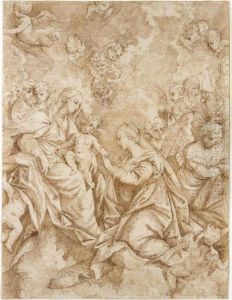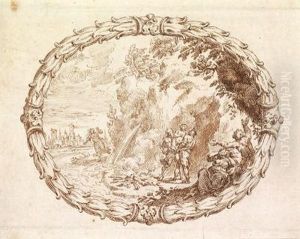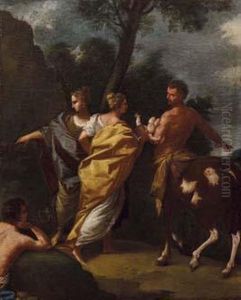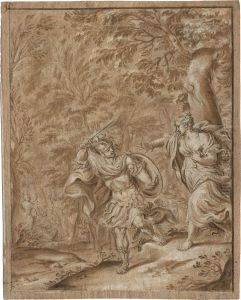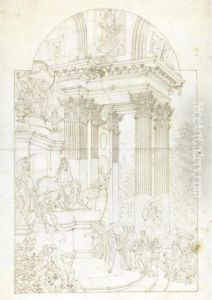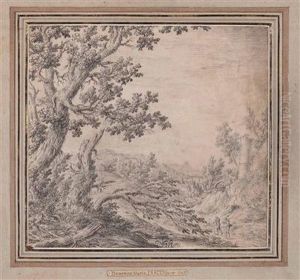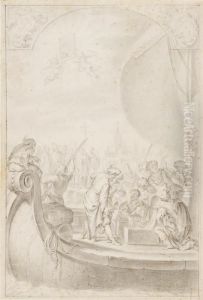Domenico Maria Fratta Paintings
Domenico Maria Fratta was an Italian painter, draughtsman, and printmaker active during the Baroque period. Born in 1696 in Bologna, he was part of a vibrant artistic milieu that included figures such as Giovanni Battista Piazzetta and Giambattista Tiepolo. Fratta was known for his skillful pen and ink drawings, which often served as preparatory studies for paintings and engravings.
Fratta received his initial training in Bologna, a city with a rich artistic tradition that was home to the renowned Accademia di Belle Arti, founded in the 16th century. He was influenced by the Bolognese school, particularly by the works of the Carracci family, as well as by the dynamic styles of the Venetian masters. While there is not an extensive record of his life, it is believed that Fratta's work was appreciated by his contemporaries, and he gained a fair amount of success as an artist.
His contributions to the world of art are primarily recognized through his drawings. Fratta's work was characterized by a strong sense of movement and fluidity, with a fine attention to detail. He had a talent for capturing the expressions and emotions of his subjects, which ranged from religious scenes to mythological narratives. Despite the fact that he was overshadowed by some of his more famous contemporaries, his work has been appreciated by art historians for its quality and the insight it provides into the artistic processes of the time.
Unfortunately, Domenico Maria Fratta's paintings and prints have not survived in great numbers, and as a result, his reputation has been somewhat eclipsed by other artists of the era. However, the drawings that remain are valuable examples of the Baroque style and provide a testament to his abilities. Fratta passed away in 1763 in Bologna, leaving behind a modest but meaningful legacy within the annals of Italian Baroque art.
